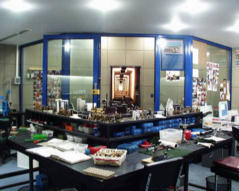

 The Accurate Reloading Forums
The Accurate Reloading Forums  THE ACCURATE RELOADING.COM FORUMS
THE ACCURATE RELOADING.COM FORUMS  Guns, Politics, Gunsmithing & Reloading
Guns, Politics, Gunsmithing & Reloading  Reloading
Reloading  Weighing And Sorting Brass!
Weighing And Sorting Brass!Go  | New  | Find  | Notify  | Tools  | Reply  |  |
one of us |
I try to keep mine within 1% of the mean. It looks like your already there, I`d use them as they are. | |||
|
| one of us |
I agree with Joe. I usually use the 1% rule. It has served me well. ------------------ | |||
|
| One of Us |
wksinatl - I shoot a 6.5mm-.284 target gun. I only use Lapua brass. Normally I separate my brass by weight, however, when I started weighing the Lapua brass, I had one pile - all were within 1% of each other. This is the joy of purchasing Lapua brass. I do not know how they do it, but their brass is head-and-shoulders above anything else. If this is your first 6.5mm-.284 you will love the cartridge. I am in the process of weeding out several quarter bores and I will most likely build another 6.5mm-.284 hunting gun. The case is inherently accurate and you will see many of them used for 1,000 yard target guns. | |||
|
| one of us |
wksinatl, One thing to keep in mind is that the .284 case has a good deal of brass machined off in the manufacturing process due to the rebated rim design. I have found that unless your brass is exceptionally uniform, the weight variations you are measuring could simply be slight differences in exterior brass dimensions rather than internal volume - as I assume you are trying to determine. I had a lot of brass recently that varied up to .011 in rim diameter and thickness! Take a caliper and measure the rim diameter, rim thickness and case diameter at the extractor cut. If you find significant differences, this will confound your attempt to get case uniformity. What you are after is uniform interior volume. Here is what I suggest: You now have a very uniform lot of brass in relation to internal case capacity, and you know they shoot very close to the same spot. In fact, if your initial segregation based on accuracy is acceptable, you could leave out the volume calculations altogether. Accuracy is the bottom line after all. Bobster | |||
|
| <wksinatl> |
Thanks guys, I guess I am in better shape than I thought. I am very impressed with the Lapua brass. I also use it in a 6br and a .308. Thanks for your time! | ||
|
| one of us |
Now you're talking Bobster! Spend a little more time shooting and a little less time in the shop addressing problems that may not be problems. If your necks have been uniformed and there is a variance in weight, you would have to know where the weight is before deciding if its a problem. The best way to decide is by shooting the bloody things. As you posted, discard any unexplained flyers. Then you have moved from theory to reality. And spent a nice day at the range. Got a bit of sun and practiced your bench technique............. | |||
|
| Powered by Social Strata |
| Please Wait. Your request is being processed... |
|

Visit our on-line store for AR Memorabilia

